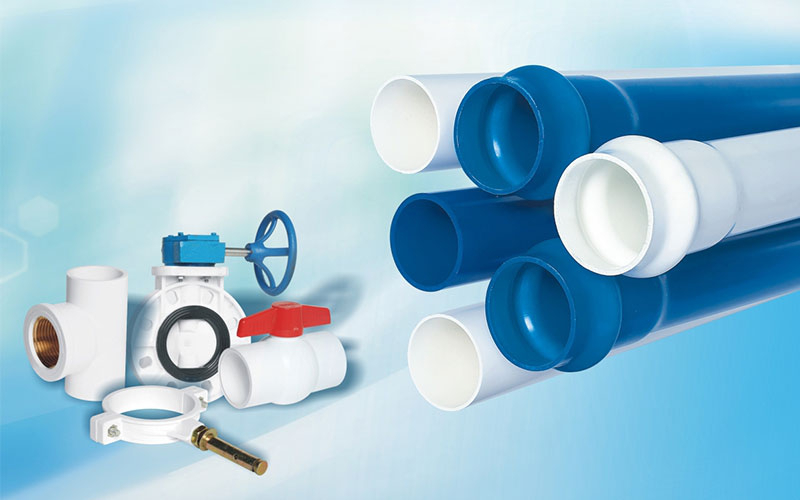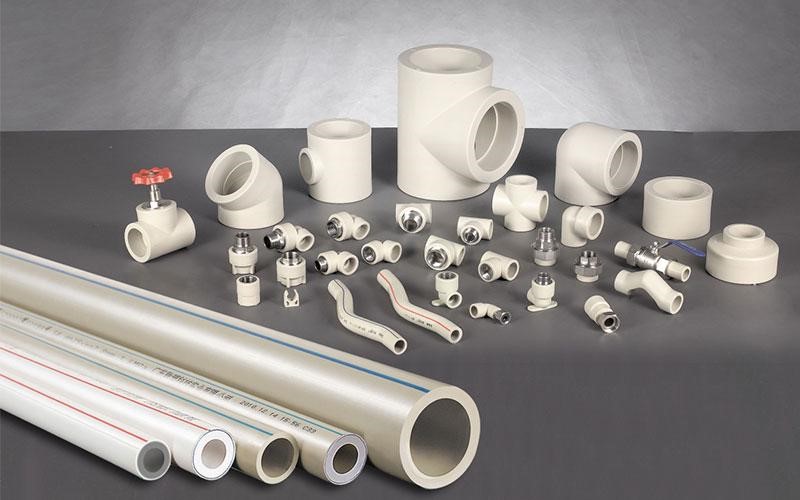Table of Contents
Clean water has proven to be vital to the economy, public health, and communities. River and ground water can contain many harmful contaminants, which include everything from viruses and bacteria to pesticides and metals.
Before contaminated water gets sent to residential homes, it’s filtered and treated at a local water treatment facility. The water then moves through pipes until it reaches nearby homes and businesses. Having the right piping for water lines is essential to ensuring this process goes smoothly. Here at LESSO, we offer a range of high-quality plumbing pipes that are made with several different materials to accommodate any application.
Safe Pipe Options for Drinking Water
When you’re getting ready to start a new residential or commercial project, you’ll discover that there are numerous plastic water pipe types that you can use. These pipes can be separated into copper, plastic, and composite categories. The ideal pipe for your project depends on the application it’s being used for.
Copper Pipes
If you wish to know what type of pipe is used for main water lines, copper is at the top of the list. Since copper is a type of naturally occurring element that you can find in soil, water, and rocks, it’s safe to use as a piping material.
While this metal is non-toxic, it’s important that you choose cooper pipes that come with lead-free joints. Copper pipes that don’t contain lead are durable and long-lasting. It’s possible for these pipes to last for as long as 100 years if they’re properly maintained.
Keep in mind that the water’s pH level can play a role in the quality of the pipes. If the water has an acidic pH reading of less than 7.0, you may need a purifier. High acidity can lead to corrosion in water piping. Corroded pipes might cause diarrhea and stomach pain. Because of the many advantages of copper pipes, they’re costlier than other materials.
Plastic Pipes (CPVC, PEX, HDPE)
Plastic is a safe and affordable material that can be used to make the best pipe for water supply in home. The primary water pipe types plastic includes CPVC, PEX, and HDPE. If you’re considering the many types of plastic water pipe for your next project, you should weigh the pros and cons of each.
Plastic is a strong, durable, and lightweight material that’s made from petroleum. These pipes are highly resistant to corrosion and accommodate many different temperatures. CPVC pipes are made directly from chlorinated polyvinyl chloride. Because of how affordable these pipes are, they are routinely used to create residential plumbing systems. This material is also among the easiest to install.
PEX piping is made from cross-linked polyethylene. These pipes are considered to be safe when used for drinking water. They are also resistant to highly acidic water. Even if the water that’s sent through the pipes has a pH level that’s below 7.0, the plastic should hold up well. PEX is a flexible material.
HDPE pipes are comprised of high-density polyethylene. They have a high molecular weight, which makes them durable, long-lasting, and leak-proof. Since HDPE pipes come with a smooth interior, they are regularly used for the transportation of water to residential homes. It’s believed that these pipes can actually increase water pressure. When you need affordable, reliable, and safe water piping, each of the above plastic materials will provide you with the characteristics you’re looking for.
Composite Pipes
Composite piping is a highly innovative solution that resolves many of the problems that installers and construction crews have with conventional pipes. While metal and plastic pipes have their advantages, they also have issues that can’t be overlooked. For example, metal piping corrodes easily. In comparison, plastic pipes don’t work well under extreme temperatures.
Composite pipes are made from a combination of durable thermoplastic materials, which include everything from polyvinyl chloride and high-density polyethylene to fiber-reinforced plastics. These pipes are much stronger than any plastic or metal options.
LESSO's Offerings
Here at LESSO, we offer a selection of pipes, which include PVC, UPVC, PPR, and other composite solutions. PVC pipes are made from polyvinyl chloride and are regularly used for water piping. PVC-U is an unplasticized PVC that offers high rigidity. There are many benefits of using our PVC-U pipes. Along with being affordable and easy to handle, they are also safe and should last for more than 100 years.


As for PPR, it’s a type of plastic pipe that’s made from polypropylene. You can use it to deliver cold and hot water to residential homes. While it was originally developed in France during the 1960s, it has since spread throughout the world and has become popular because of its energy-saving characteristics.
The main advantage of using PPR piping is that it’s lighter than other materials. We also offer durable aluminum-plastic composite piping that can be used for a wide range of applications.
When you’re selecting home water supply pipes for your next project, there are some best practices you should adhere to. For one, don’t automatically assume that tap water is free from contaminants.
Older pipes have a greater likelihood of containing lead, which can eventually leach into pipes. Make sure any material you use is lead-free. Call the manufacturer of your preferred piping material to determine if the piping has less than 0.20% lead.
When you’re searching for the ideal piping material, consider copper or plastic. Copper pipes are designed to last for a long time without leaching harmful chemicals into the drinking water. Plastic pipes that are made from polypropylene or a similar material are also less likely to leach chemicals into the water.
Best Pipe Types for Home Water Supply
If you’re in the midst of searching for the best pipes for home water supply, you can choose copper, plastic, or composite materials. If you want durable and long-lasting pipes that can last for more than 100 years, copper might be the ideal option for you. However, these pipes can be costly.
When you want an affordable piping material, plastic is the way to go. However, some types of plastic are better than others. HDPE plastic offers more durability than the other types. On the other hand, PEX plastic is more flexible.
The composite materials we provide at LESSO include PVC, PVC-U, and PPR materials. Each material can be used in the creation of residential drinking water systems. Along with delivering drinking water to a home, these pipes can also be connected to water heaters. Composite piping materials have the best characteristics of metal and plastic ones without the same weaknesses. The main advantages of choosing composite solutions for your next project include:
- Corrosion-resistant
- Inert to acids and chemicals
- Free of scaling
- Handles high temperatures
- Strong and sturdy
- Easy to clean
- High pressure resistance
Conclusion
Because of how many piping materials are available on the market, it can be challenging to find one that’s long-lasting, affordable, and safe to use. With this guide in hand, you should be able to find the safest pipes for drinking water.
Whether you select PVC-U or PPR pipes, you’ll benefit from high corrosion, low maintenance requirements, and high temperature handling. At LESSO, our selection of high-quality plumbing pipes is varied to account for every need our clients have. Every piping solution we offer can be used to make safe and efficient water supply systems.
FAQs about Drinking Water Pipe
It varies by material, but generally, pipes should be inspected every 20 years and replaced if necessary.
Galvanized pipes can corrode and release harmful elements into water, so they are not recommended for drinking water.
You can have your water tested for contaminants or hire a professional to inspect the condition and material of your pipes.
Brass pipes can contain lead, which may leach into water, especially in hot water systems, posing health risks.
Recommend Reading


Best Water Purifier For Home Using?
Table of Contents What is the most crucial element for survival? You may first think about water. Indeed, water is vital for all creatures to


Introduction of Drinking Water Supply System
Table of Contents A water delivery system comprises three essential elements: the source of supply, the processing or treatment of the water, and the delivery








